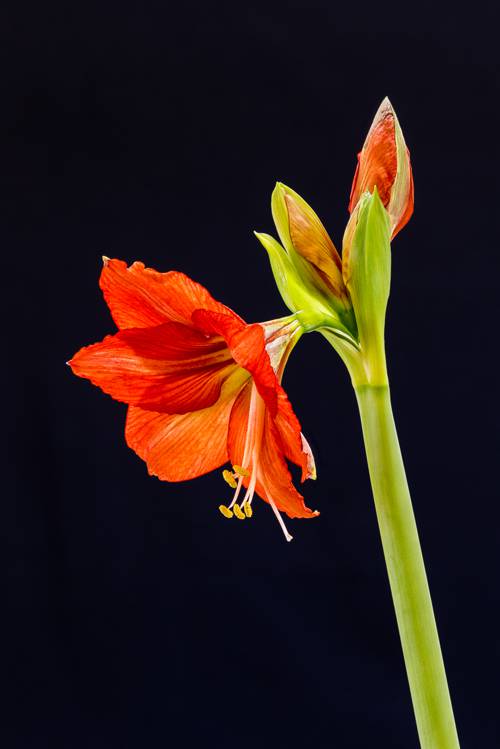
FAQ About Indoor Plant Phenology and Activity Cycles

What is plant phenology?
Plant phenology is the study of the timing of life cycle events in plants, such as germination, flowering, and dormancy, and how these events are influenced by seasonal and environmental changes. Observing phenological patterns can help in understanding how plants interact with their environment and how they might be affected by climate change.

How do indoor plants respond to seasonal changes?
Indoor plants can respond to seasonal changes in a variety of ways, even when they are not directly exposed to outdoor conditions. These responses may include changes in growth rate, leaf development, or flowering cycles. Indoor environments may mimic seasonal cues such as temperature fluctuations or changes in daylight length, which can influence plant behavior.

What are circadian rhythms in plants?
Circadian rhythms are internal biological clocks that help plants regulate daily activities in sync with the 24-hour day-night cycle. These rhythms influence various physiological processes, including photosynthesis, growth, and nutrient uptake. Despite being indoors, plants still follow these intrinsic cycles, influencing how they develop and function.

Why is understanding phenology important for indoor plant care?
Understanding phenology is crucial for indoor plant care as it allows gardeners to anticipate changes in plant needs throughout the year. By knowing when a plant is likely to enter dormant periods, or when its growth will accelerate, caretakers can adjust watering schedules, light exposure, and feeding to optimize health and growth.

How does artificial lighting affect indoor plant phenology?
Artificial lighting can significantly influence the phenology of indoor plants by altering their perception of day length. By providing additional light during dark seasons or simulating longer daylight periods, artificial lighting can encourage growth and flowering out of sync with natural seasons. However, it is important to balance light intensity and duration to prevent stress.

Can indoor temperatures influence plant activity cycles?
Yes, indoor temperatures can greatly affect plant activity cycles. Different temperature ranges can promote or hinder plant processes like germination, growth, or dormancy. Maintaining stable conditions that mimic a plant’s native environment can support healthy growth and minimize stress.

What role does humidity play in indoor plant phenology?
Humidity levels are a crucial factor in indoor plant phenology as they influence transpiration rates, nutrient uptake, and overall plant health. Ideal humidity levels vary among plant species, and maintaining appropriate levels helps support their natural phenological cycles, improving vitality and growth.

How do indoor plants know when to flower?
Indoor plants sense when to flower based on a combination of environmental cues such as light, temperature, and water availability. These factors influence the plant's hormonal balance, particularly the levels of florigen, a hormone that promotes flowering. While indoor conditions can alter natural cycles, plants retain their innate timing mechanisms.

What is the dormancy period for indoor plants?
The dormancy period is a phase when growth and metabolic activities in indoor plants slow down or temporarily stop. It typically occurs in response to climatic cues such as reduced light and temperatures, mimicking winter conditions. Proper care during this period is essential for regenerating and resuming growth once favorable conditions return.

How can I simulate seasonal changes for my indoor plants?
Simulating seasonal changes for indoor plants can be achieved by adjusting light, temperature, and humidity levels to mimic natural conditions. For example, providing more light and slightly warmer temperatures during summer months, and reducing light and heat during winter, can help in maintaining a natural cycle, aiding in healthier plant development.

What are the benefits of aligning indoor plant care with natural cycles?
Aligning indoor plant care with natural cycles results in healthier and more vigorous plants. It ensures that care practices such as watering, feeding, and pruning are synchronized with the plant's natural phases, leading to optimized growth, improved resistance to diseases, and enhanced flowering or fruit production.

How does day length impact indoor plant behavior?
Day length, or photoperiod, directly impacts plant behavior by influencing photosynthesis and flowering. Plants use photoperiod signals to time growth processes, including when to bud or flower. Understanding and manipulating day length with grow lights can help recreate conditions suitable for optimal indoor plant health and productivity.

Do all indoor plants have the same activity cycles?
No, not all indoor plants have the same activity cycles. Different species originate from various environments, which have unique seasonal changes. Understanding the specific phenological and activity cycles of each plant species allows for customized care, ensuring that each plant receives optimal conditions for thriving.

Can indoor plant phenology change over time?
Yes, indoor plant phenology can change over time due to adaptations to environmental conditions, changes in care practices, or even genetic factors. Observing these changes can help in adjusting care routines to better suit the evolving needs and responses of the plants.

How does water availability affect indoor plant cycles?
Water availability is a critical factor influencing indoor plant cycles, as it affects root growth, nutrient transport, and photosynthesis. Adequate watering aligned with a plant's phenological cycle ensures it receives enough resources during periods of active growth and conserves resources during dormancy.

What are common misconceptions about indoor plant phenology?
A common misconception about indoor plant phenology is that it closely mimics outdoor plants' cycles. While indoor plants follow many natural cues, limited exposure to seasonal changes and controlled environments can lead to different growth patterns. Another misconception is that all plants require the same conditions, which overlooks the varied needs based on species and origin.

How can I optimize growth for indoor plants using phenology knowledge?
To optimize growth for indoor plants using phenology knowledge, monitor the specific life cycle stages of your plants. Adjust light, water, and nutrients based on their growth stages, using tools like grow lights and humidifiers if necessary. This approach helps enhance growth rates, increase flowering and fruiting, and prevent diseases.

How do external environmental cues influence indoor plant growth?
External environmental cues such as changes in light intensity and duration, temperature fluctuations, and humidity variations heavily influence indoor plant growth. These cues impact hormonal levels and metabolic processes, guiding the plant’s life cycle stages. Even indoors, plants rely on these cues to maintain their growth patterns.

What strategies can help manage the phenology of indoor plants?
Strategies to manage the phenology of indoor plants include using grow lights to control photoperiod, adjusting temperatures according to the plant's natural habitat, and maintaining consistent humidity levels. Regular observation and adapting care practices based on seasonal changes can ensure the plants remain healthy and vigorous.

Why might an indoor plant stop growing during certain times of the year?
An indoor plant might stop growing during certain times of the year due to entering a dormancy period or responding to environmental stressors like lower light levels or cooler temperatures. Providing appropriate care during these times, such as reducing watering and feeding, helps the plant conserve energy and prepare for growth when conditions improve.
